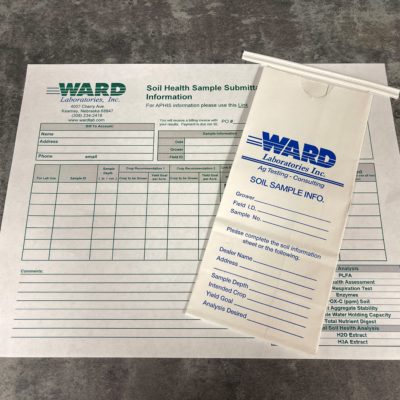Being aware of the potential risks of heavy metals in soils is important. In Omaha, 125 years of lead smelting at the American Smelting and Refining Company (ASARCO) resulted in elevated soil lead concentrations (around 400 ppm) near residential housing. Furthermore, a study conducted on an urban garden soil near a railroad station in Lincoln found that consumption of one serving of garden-grown lettuce would result in lead and arsenic intake above the EPA limits for human consumption.
Soils typically have a range of naturally occurring heavy metals. However, heavy metals sourced from human activity can produce concentrations resulting in increased exposure risks. Therefore, targeted cleanup methods are imperative.
Soil is like a sponge. Metals end up bound to organic matter and minerals, accumulating with time.
The three prominent metals in contaminated soils are lead, arsenic, and cadmium. Arsenic can be naturally enriched in phosphate used for fertilizers. Cadmium becomes enriched from zinc mining. Finally, lead was historically sourced from leaded gasoline and paint. These household items were phased out decades ago. However, soils can have a naturally high background from decades of gas combustion and lead paint chipping from old buildings. Additionally, Lead-arsenic pesticides were even used for around 60 years to treat coddling moths in orchards throughout the United States.
Importance
Metals are extremely carcinogenic; arsenic causes skin cancers because it binds to and degrades proteins in skin tissue. Lead targets brain development in children; repeated exposure and they’re affected for the rest of their lives. Cadmium promotes kidney cancers as well as impairs bone development.
The EPA limits for ag soils have been set at 200 ppm for lead, 0.11 ppm for arsenic, and 0.48 ppm for cadmium. Residential soil limits are much higher because those soils aren’t typically used for large-scale food production.
Exposure from heavy metals in soil is facilitated through plant uptake and consumption, water transport or consumption, or inhalation of metals bound to dust. The table below outlines some crops that have been known to target certain metals.

Ingesting metals in any form is bad but inhalation is considered one of the worst exposure pathways since anything coming into the lung is considered 100% bioavailable. Bioaccessible metals are parts of ingested metals that are available for absorption in the gut after digestion. Bioavailable metals refer to ingested metals that are incorporated into biological functions and exert their effect on that system.
Analysis
If you’re a new homeowner and you’re aware of any historic heavy metal activity in your region, determining the concentration of metals in your soil is key prior to any gardening activity. There are a few different ways to test for metals. A good first step is to get an idea of the extent of the total contamination by getting a total elemental digest; the sample is acidified, heated, and dissolved to determine the total metal values in the soil.
If you’re concerned with plant uptake, a DTPA (diethylenetriaminepentaacetic acid) micronutrient extraction, the same method used to determine micronutrient availability in soils, is an ideal approach. Some apply an ammonium acetate extraction, which is what’s normally used to determine exchangeable cations (calcium, magnesium, potassium, and sodium) in soils. This can also be considered “plant available”.
Originally Published in the April 2022 Ward Letter.





Where did you find the EPA set limits for ag soils? I’m looking for a longer list of metals if it’s available.
Did you ever find the EPA limits? I’m also looking for this list of ppm for each heavy metal…